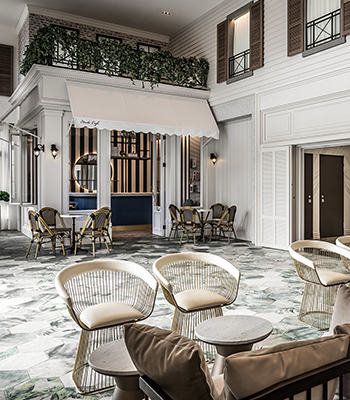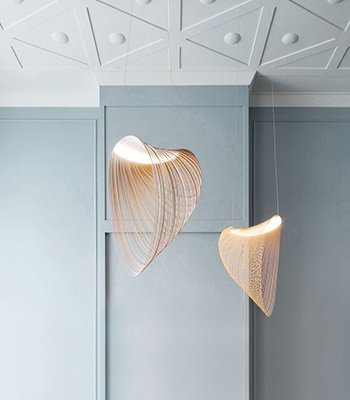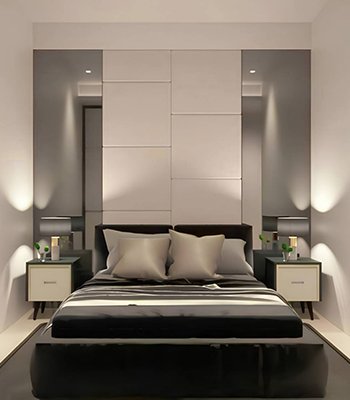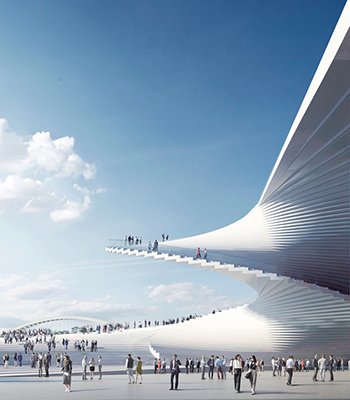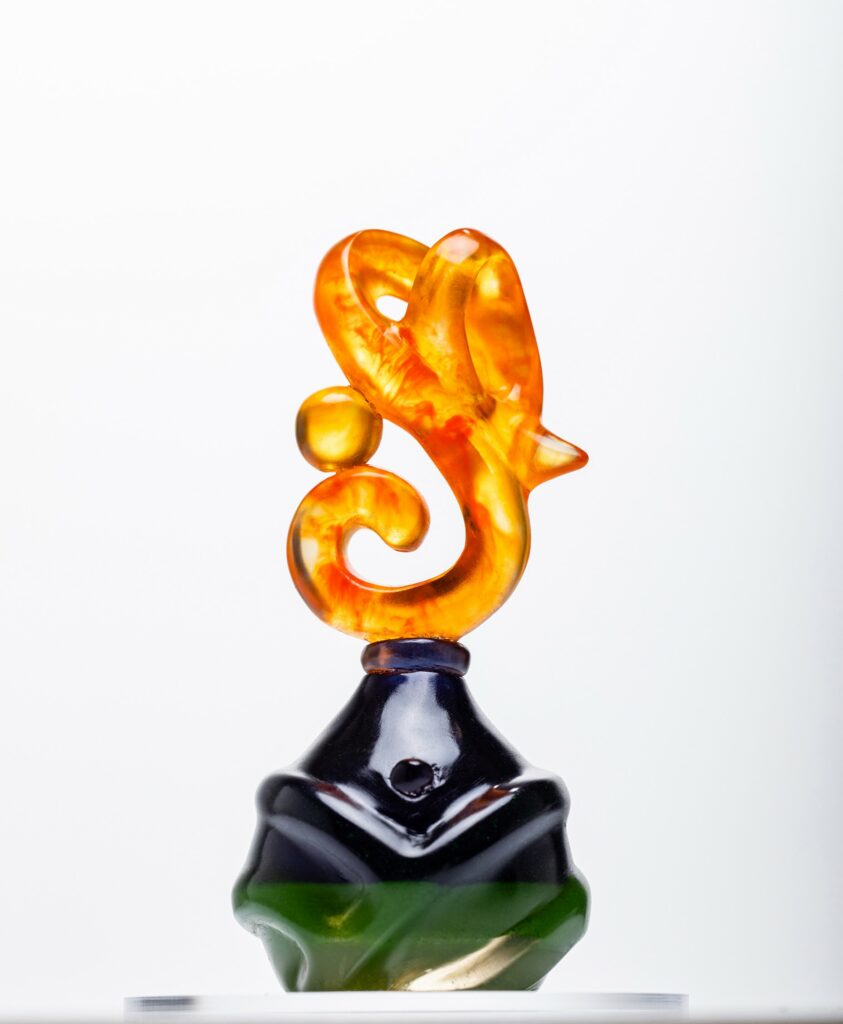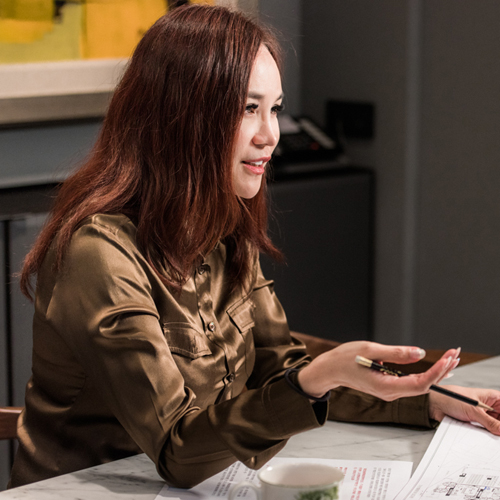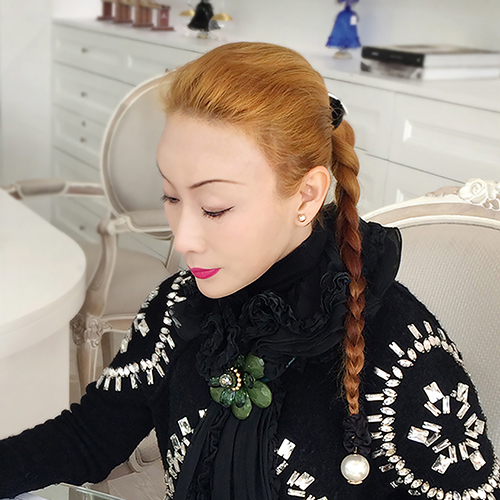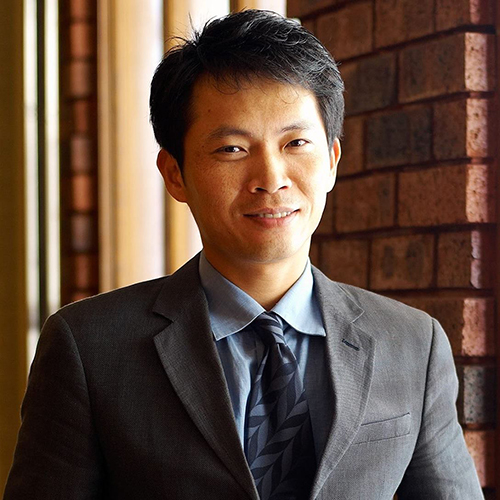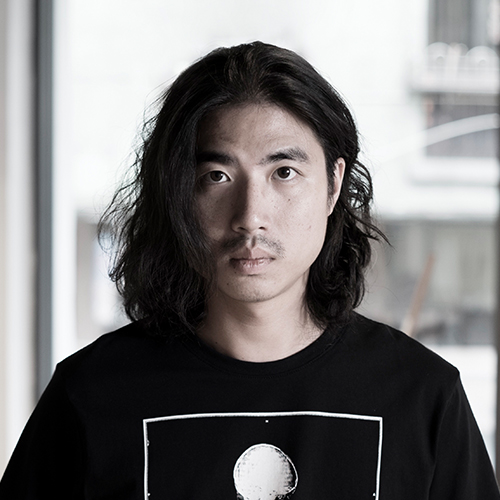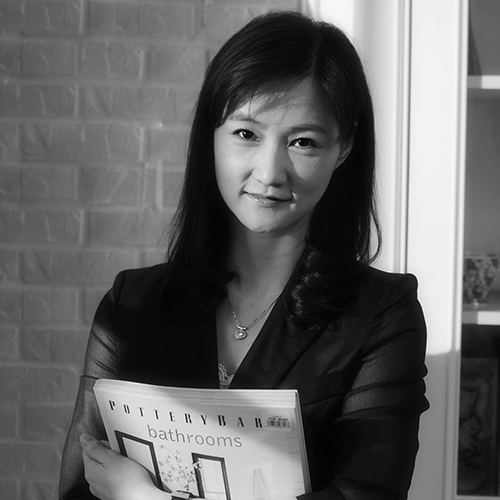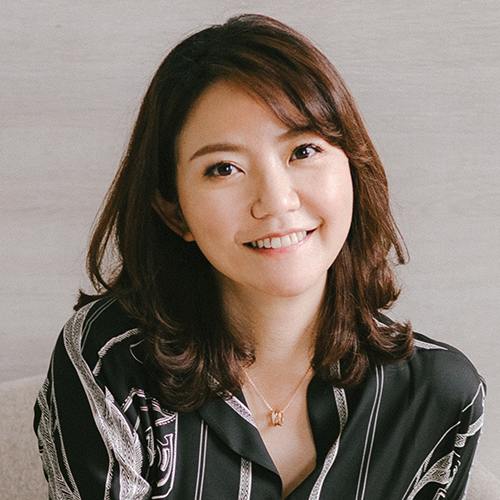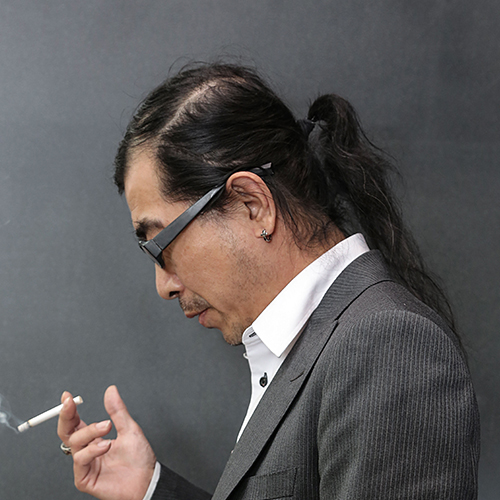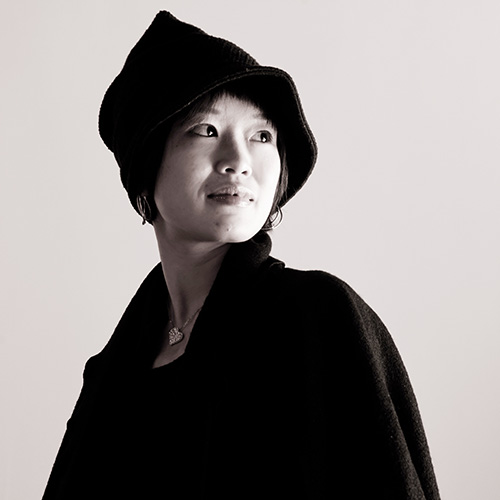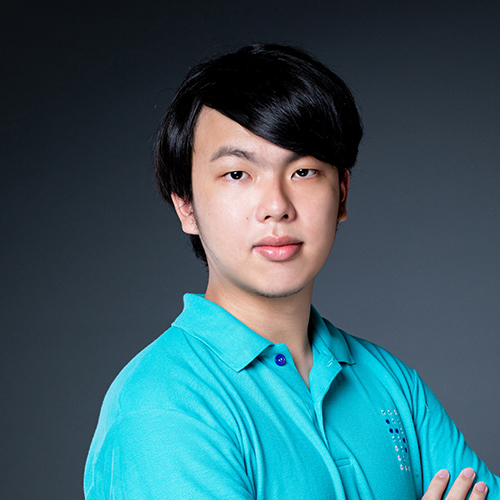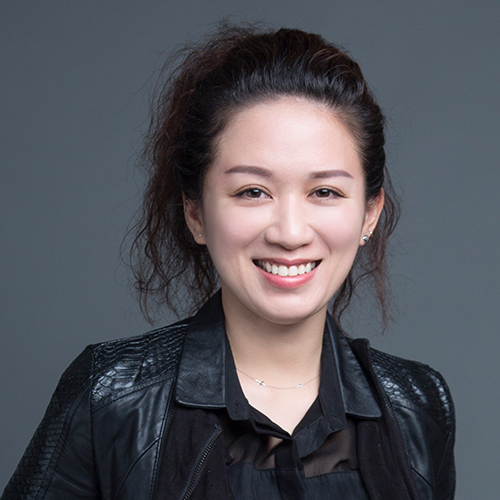
卡斯帕爾.波恩 X SMK 丹麥國立美術館 戶外展覽《觸摸》
房屋與城市將比人類生命更衰老, 然城市也會消失,市區會沈入地面,街道會被更名, 這裡的建築將隨著記憶逝去。 我們於屋間穿梭 尋覓蛛絲馬跡 向我們傾訴著, 有什麼將會消亡。 —— 出自卡斯帕爾・波恩詩集《建築》
Houses and cities grow older than human life, but cities disappear also, districts sink into the earth, streets are renamed, here buildings go away with memory. We walk through the houses and look for clues that can tell us, what will disappear. —— Bonnén, Arkitektur, 2007

然後他 | And Then He 2016 – 2019,油料於畫布 | Oil on canvas,115 x 145 cm | 45.2 x 57 inches
時空之中 In time and space
自 1993 年波恩於丹麥皇家美術學院(Royal Danish Academy of Fine Arts)就讀以來,他就透過多種媒材來審視我們所居住的空間,這包含了我們身處的物理空間,以及我們透過關係、感受、回憶和夢境所形塑的非物質空間。 波恩將我們所居住的空間視為錯綜複雜的建築。它們由牆壁、地板和天花板這些共同定義了空間物理性質的實體物所構成, 同時也包含了眾多基於我們經驗和感受所創造的迷思,而造就了某種非物質性的空間:一種空間的靈魂。 波恩藉由他從自身與「空間傳記」為出發點的創作,指出空間是一種我們得以認知世界的媒介。在《建築(Architecture)》一 書中,波恩寫道:「家不只是你為了家庭所創造的空間;家是殼,是你自己的一部分。」波恩主張,房屋與家屋不僅構成 我們生活的物理框架,很大程度也構成了我們與外界媒合的心智平台。誠如 Carsten Thau 所寫,房屋形成了一種精神狀 態—它是一個穩定的鏡子,回照了我們肉體、物理上的存有,以及我們對成就生活的看法;他下了這樣的結論:房子如同 繭,是身體的延伸。也因如此,當鏡子變得不穩定時變化會更加強烈,例如,當一段家庭或感情關係變質,就算物理空間 毫無變化,剎那間一個人卻再也體會不到在家的感覺。
Since Kaspar Bonnén was admitted at The Royal Danish Academy of Fine Arts in 1993 he has, through a number of media, scrutinized the spaces we live in; both the physical space which surrounds us and the immaterial space we create through our relationships, feelings, recollections and dreams. Kaspar Bonnén views the spaces we reside in as complex constructions. They consist of a materiality, of walls, floors and ceilings, which together define the physics of the space, but also of a number of mythologies, understood as a kind of immaterial space, created through our experiences and feelings. The spirit of the space. By taking a personal and ‘space–biographical’ starting point in his works, Kaspar Bonnén points out that space is a medium through which we learn about the world. In the text Architecture, Bonnén writes, amongst other things, that “The home is the space that you do not create merely for the sake of the family; the home is the shell, which is a part of yourself.” Bonnén’s assertion attests to the idea that the house and the home do not merely constitute the physical framework of our lives, but to a large extent constitute the mental platform from which we meet the world. As Carsten Thau writes, the house forms a mental state — it is a stabilising mirror, which resonates of our corporeal, physical presence and of our ideas about successful life. He concludes: the house is an extension of the body, like a cocoon. Therefore it can also seem intense if this mirror destabilises; for example, if a family relationship or a love relationship changes. Suddenly one is no longer able to experience feeling at home, even though the house’s physical space is the same.
「那些我熟悉的空間,樣貌看起來一致,卻令我感受不同。」
Those spaces I knew so well, looked as they usually did, and yet they felt different. —— Bonnén, Hjem igen, i Hjem igen, 2004
就像心理波擾般,我們世俗生活的變化意味著我們在熟悉的空間中也經歷了某種「失去」。失去情人、朋友或家人時,先前在物理空間中所存有的於忽然之間就缺席了。而在這物質性損失的同時,一些熟識的物件卻也如同我們曾擁有的這段關係逝去的象徵性紀念品般留存下來。
Akin to a mental seismic disturbance, changes in our worldly life can mean that we experience a sensation of place loss in relation to those spaces we are otherwise familiar with. In the loss of a lover, a friend or a family member, the presence which was previously materialized in the physical space can suddenly be turned into an absence. As with a materialisation of the loss, the wellk-nown objects are left behind like memento mori of the relationships we were a part of.

筆記本|Notebook,2016 – 2019,油料於畫布 | Oil on canvas,115 x 95 cm | 45.2 x 37.4 inches

〈Jeg Har Aldrig Gjort Det Og Jeg Vil Aldrig Gøre Det Igen |我從來沒有這樣做過,我再也不會這樣做了〉
2019 Oil on canvas|油料於畫布 ,115 x 115 cm|45.2 x 45.2 inches
空間考古學 Space archaeology
透過展現眾多複雜的空間結構,讓可識別的元素脫離原始文本、並插入新的想像,波恩藉此呈現出我們周遭空間的多重維度。在他的繪畫和照片拼貼作品中,具象物件被網狀的抽象圖形疊蓋或置換,從而在其中得以創建多維度空間。而在他的文本中,各式空間一齊出現,他以言語遊走於物質建築、經驗與記憶空間之中,並用空間作為隱喻或情感的意象。 「我的腳與球完美接觸,它撞到球網的一隅,也就是目標,每個人都在歡呼。 我初次在一個女人裡面,我坐在我房間的一 角。 我在迴廊上再次看到自己。」
By opening up a number of complex spatial structures, where the recognizable elements are detached from their original context and inserted in new and imaginary contexts Kaspar Bonnén shows us that the spaces we surround ourselves with contain several dimensions. In his paintings and photo collages the figurative elements are overlapped or displaced in a network of abstract forms, creating a spatial multi-dimensionality in the work. Also, in his texts, various conceptions of space appear simultaneously, as he, in the language, moves freely between the material space of architecture, experience and the space of memory, together with space as a metaphor and image of feeling. “My foot makes perfect contact with the ball. It rams the corner of the net and it’s a goal and everybody is cheering. I am inside a woman for the first time and I am sitting in a corner of my room. I see myself again in my corridor.”
空間在波恩的作品中蛻變成時間,事件之間的空間性連結也因此優先於其時序性連結。如此一來,他並不把時間描繪成連 續流淌的河流、或把事件說成一個接一個的珍珠串,而更像是時間的島嶼,以各種空間性彼此相連。 就像一位滿腹熱情的空間考古學家,波恩也會挖掘和收集空間碎片、並藉此探尋自身的歷史。如 Carsten Thau 所寫,碎片 是時間對物件和記憶圖像破壞後的產物。曾經銘記的事物隨著時間推移,象徵著時間軌跡,從而成為我們既迷戀又排斥的 碎片。波恩的空間考古學是透過收集碎片、繼承經驗的殘餘,透過如此嘗試來形塑出有秩序且有系統的事件、經驗和情感, 由此共構他現有的生活。
Space becomes time in Kaspar Bonnén’s work, in that the spatial connection of events takes precedence over the chronological connection. In this way, he does not depict time as a continuously constructed stream where events follow one another like pearls on a string, but rather like islands of time, linked to various spatiality. Just like an impassioned spatial archaeologist, Kaspar Bonnén excavates and collects fragments of space, using them as sources in an investigation of his own history. As Carsten Thau writes, the fragment is a consequence of the destructive commencement of time on the object or the memory image. That which is remembered fades over time and becomes fragments that we are both fascinated and repelled by, because they appear as signs of time and its course. Kaspar Bonnén’s spatial archaeology can be seen as an attempt to collect the pieces, the succession of experiential remnants, and through that to then form an order and systematism in the events, experiences and feelings which have formed the life he has lived.
Change appears to come from certain points. We always want to find incidents which have triggered what happened later. How have we arrived from the past up to our present? History is an anthill of possible paths, and one must find those pathways where one can wander in one’s own history. —— Bonnén, Godnathistorier, in Hjem igen, 2004

〈Dishes|碗盤〉2019 Oil on canvas|油料於畫布,115 x 165 cm|45.2 x 65 inches

〈茶壺|Teapot〉2016 – 2019,油料於畫布 | Oil on canvas,145 x 115 cm | 57 x 45.3 inches
在秩序和無序之間 Between order and disorder
無論是他的圖像還是文字,波恩都在秩序與無序之間的空間連續性中游移。 他一面匯集聯繫——建立、創造文本和結構、 尋求穩定和秩序;一面又破壞、消融、解構,散播無序和物體的千變萬化。在其作品中,波恩透過規律圖案的安排來引起 人們對有序與無序間張力的關注。可辨識的元素被逐漸撕裂,圖案將這些元素從最初的具象轉變成高度的抽象。「我們是過程,是我們無從理解的無盡歷史中進化的幻影。然而,我們仍建造著足以容納個人歷史的小房子。即使宇宙正 緩慢地埋葬我們、拆解牆壁,我們還是能是時不時地去探討我們的理由,因為若找不到空房子了,那一排排緊鄰的房屋, 還映照著我們的適存之途。」「重新開始是我們所尋覓的安全感。 不可識別性則難以掌握。」波恩認為改變不僅是隨著時間的推移而產生,也會直接在空間表現出來。波恩曾利用一個作品「我永遠愛你」來表達改變 的潛能,他用保麗龍切割出字句、放置於水面上,作品隨著水波慢慢遠離彼此,原本的意涵也逐漸瓦解。波恩藉此創造了 一齣情感豐沛的空間畫面,讓我們得以進入其中並感受到它的不穩定性。而與其負面解讀,不如用積極的方式去詮釋:隨 著字句的崩解,波恩將「愛」變成一種空間次元,其所經歷的變形也由此產生新的可能—成為一個新的「生活空間」。 波恩也會用「門」來表現改變的潛能。他會具體地使用門作為藝術創作的主軸,以此調和其畫作中不同的時空意象。他也 會在文本中藉由門來隱喻著:一種可能的結束或許開闢著新的可能。
Both in images and text, Kaspar Bonnén moves in a spatial continuum between order and disorder. On the one hand, he draws together connections — building up, creating context and structure. He seeks order and stability. While on the other hand, he also breaks down, dissolves and deconstructs. He disseminates disorder and the constant changing in objects.
We are processes, evolutionary shadows in an almost endless history we cannot comprehend. Still, we build small houses, which can accommodate each of our histories. Even though we can wonder about our reasons from time to time, we do it, while the universe maybe slowly stretches us and pulls the walls apart; for what if the empty space cannot be found, only a row of rooms following after one another, reflecting our way of adapting ourselves. —— Bonnén, Inventarium, 2001
In his works, Kaspar Bonnén draws attention to the tension between order and disorder by equipping the motifs with an inherent movement, where the distinguishable elements are gradually torn out of place and the motif moves from its figurative starting point towards a higher degree of abstraction.
That Kaspar Bonnén views change as something which does not merely take place over time, but is manifested in space. Kaspar Bonnén points out “a potential for change”when he launches the polystyrene words “I will always love you”, and slowly allows the movement of the water to dissolve the meaning of the words. In this way he creates a picture of the mental and emotionally-charged space in which we enter into and shows it can be destabilised. And it should not only be understood negatively, but also in a positive light. With the slow breaking apart of the words, Bonnén visualises love as a spatial dimension, a transforming process for the individual, which can open up to new possibilities — new ‘life spaces’. As an image of the potential of change, Kaspar Bonnén also uses the door. He does this both concretely by using the door as a general motif running through the work, mediating between the various image spaces of the painting, but he also inserts the door in his texts, here as a metaphor for the idea that in the same action one can close something behind you, while simultaneously opening up for something new.

〈木筏 | The Raft〉2018,油料於畫布 | Oil on canvas,200 x 240 cm | 78.7 x 94.4 inches
「那道門開始且結束,那是房間的所在之處,也為數個門指引出方向。」
The door begins and ends, it is where the room always is, where several doors find still more directions. —— Bonnén, Inventarium,2001
在波恩的作品中,「門」有著改變物體的功能,藉由「門」的意象使物體終止或分解,並因此創造出新的含義。正是由於 意義的崩解,新的意義才隨之誕生。因此對波恩來說,改變是一種促進的作用力,同時更具有開啟新事物的無限潛能;反 之,開創新可能之時,其他事物也在走向消亡。
In Kaspar Bonnén’s works the door functions like an image of the idea that with the changing of objects, their cessation or dissolution, a creation also follows. And that with the breakdown of meaning, the starting point for new meaning is created. In Kaspar Bonnén change therefore exists as a progressive entropic process, but also as a potentially infinite number of new beginnings, of negentropic interventions where something new is created, while something else comes to an end.
「創造一個房間就像想像一個人們希望停留的場域,將自己置身於創造物之中,與世界溝通。」
To create a room is like imagining a place where one would like to be staying, to place oneself in the midst of the creation and reach out to the world. —— Bonnén, Arkitektur, 2007

〈Where am I|我在哪〉2018 Oil on canvas|油料於畫布 ,100 x 130 cm|39.3 x 51.1 inches

〈Concentrating on the Paper Blurs My Surroundings| 凝視紙張模糊了我的周遭〉2019
Watercolor and ink on paper | 水彩、墨水於紙 ,104.5 x 86.5 cm cm | 41 x 31 inches



